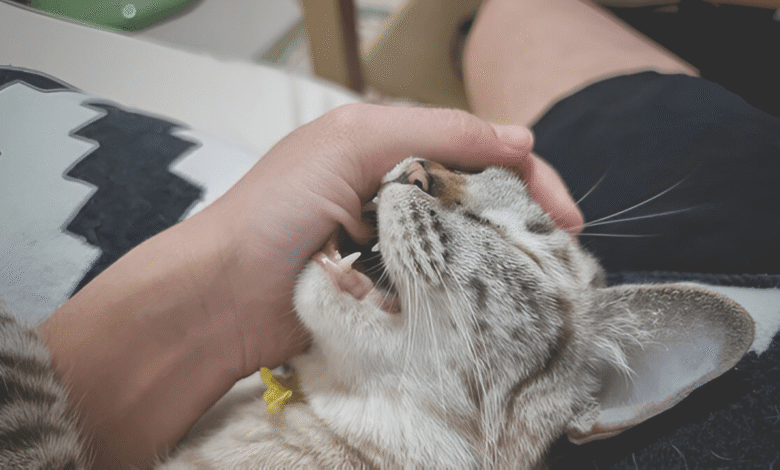
How to Stop Cat Scratching (Without Declawing)
Stop cat scratching without declawing using humane methods Discover effective scratching post and furniture protection solutions for happy cats.
Cat scratching is a natural and instinctive behavior that helps felines maintain their claws, stretch their muscles, and mark their territory. However, when your furry friend turns your furniture into their personal scratching post, it can be frustrating. Many pet owners consider declawing, but this invasive procedure can cause long-term pain and behavioral issues. Instead, there are humane and effective ways to redirect your Cat Scratching habits while keeping both your home and your pet happy.
Understanding why Cat Scratching is the first step in finding a solution. Scratching isn’t just about sharpening claws it’s a way for cats to relieve stress, communicate, and even exercise. Rather than punishing your cat for this natural behavior, providing appropriate alternatives and using positive reinforcement can help protect your furniture without resorting to harmful measures like declawing. With patience and the right strategies, you can train your cat to scratch where it’s allowed while preserving their well-being.
How to Stop Cat Scratching (Without Declawing)
Why Do Cat Scratching?
Understanding why Cat Scratching is the first step in addressing the behavior. Scratching serves several purposes: it helps cats shed old claw sheaths, stretch their bodies, and leave visual and scent marks through glands in their paws. It’s also a way for them to relieve stress and express excitement. Punishing a cat for scratching is ineffective because it’s a natural instinct instead, providing appropriate outlets is key.
The Dangers of Declawing
Declawing is not just a simple nail trim it’s an amputation of the last bone in each toe. This procedure can cause chronic pain, infection, and even litter box avoidance due to discomfort. Many veterinarians and animal welfare organizations oppose declawing because of its long-term negative effects. Instead of declawing, focus on training, environmental enrichment, and scratching alternatives to keep your cat’s claws in check.
Provide Appropriate Scratching Surfaces
One of the best ways to stop cat scratching on furniture is to offer appealing alternatives. Cats prefer different textures, so experiment with sisal rope, cardboard, carpet, and wooden scratching posts. Place these near your cat’s favorite scratching spots to redirect their behavior. Vertical and horizontal options cater to different scratching preferences some cats like to stretch upwards, while others prefer scratching flat surfaces.
Use Positive Reinforcement
Positive reinforcement is a powerful tool in cat training. When your uses a Cat Scratching post, reward them with treats, praise, or playtime. Avoid yelling or spraying water, as this can create fear and anxiety. Instead, make the scratching post more enticing by rubbing it with catnip or dangling a toy nearby. Consistency is key over time, your cat will associate the post with positive experiences.
Protect Furniture with Deterrents
If your cat keeps targeting the couch, use deterrents to make it less appealing. Double-sided tape, Aluminum foil, or plastic mats can discourage Cat Scratching. You can also apply pet-safe sprays with citrus or menthol scents, which cats dislike. For stubborn scratchers, soft nail caps (like Soft Paws) can be glued onto claws to prevent damage without harming the cat.
Trim Your Cat’s Claws Regularly
Regular nail trimming reduces the need for destructive scratching. Use cat-specific clippers and gently trim the tips every 2-3 weeks. If your cat resists, try wrapping them in a towel or trimming while they’re sleepy. For nervous cats, gradual desensitization helps reward them after each small trim until they become comfortable.
Create a Cat-Friendly Environment
Provide Vertical Scratching Surfaces
Install tall, sturdy scratching posts and cat trees near your cat’s favorite areas to satisfy their natural urge to climb and scratch. Choose materials like sisal, cardboard, or wood that appeal to their scratching preferences.
Offer Multiple Scratching Options
Place both horizontal and vertical scratchers throughout your home to accommodate different scratching styles. Include varied textures and locations to give your cat appealing alternatives to furniture.
Incorporate Interactive Play Areas
Set up window perches, hiding spots, and climbing shelves to keep your cat engaged. Rotate toys regularly and schedule daily play sessions to burn energy that might otherwise go into destructive scratching.
Use Cat-Appealing Scents & Textures
Sprinkle catnip on approved scratching surfaces and use pheromone sprays to attract your cat to appropriate areas. Avoid citrus or strong-smelling cleaners near scratching zones as these deter cats.
Designate Safe Resting Zones
Create cozy beds and quiet spaces away from high-traffic areas where your cat can retreat. Stressed cats scratch more, so providing secure resting spots helps reduce anxiety-related scratching.
Maintain a Consistent Routine
Feed, play, and groom your cat on a predictable schedule to minimize stress. A calm, structured environment helps prevent nervous scratching behaviors from developing.
Protect Furniture Strategically
Cover vulnerable areas with scratch-proof materials like vinyl or double-sided tape temporarily while training. Gradually phase these out as your cat learns to use their designated scratching spots.
Consult a Veterinarian or Behaviorist
Signs of Compulsive Scratching
If your cat scratches obsessively in one spot, causes self-injury, or ignores basic needs to scratch, this indicates a compulsive disorder needing professional intervention. Look for raw paws, bald patches, or damaged nails from over-scratching.
Possible Medical Causes
Underlying health issues like skin allergies, arthritis, or neurological conditions can trigger excessive scratching. A vet can rule out pain, infections, or dermatological problems that might be driving the behavior.
Stress-Related Behavior Issues
Major life changes (new pet, moving house) or anxiety may cause destructive scratching. A behaviorist can identify triggers and recommend pheromone therapy, environmental changes, or anti-anxiety solutions if needed.
Failed Home Interventions
If scratching persists despite proper posts, deterrents, and nail trims, professionals can assess your setup and suggest advanced training techniques or alternative solutions tailored to your cat.
Aggressive Scratching
When scratching becomes aggressive toward people or other pets, immediate intervention is crucial to address potential fear, territorial issues, or improper socialization that needs correction.
Read More: Why Your Cat Is Peeing Outside the Litter Box
Conclusion
Stopping cat scratching without declawing is not only possible but also the most compassionate approach to protecting both your furniture and your feline’s well-being. By understanding your cat’s natural instincts and providing suitable alternatives like Cat Scratching posts, regular nail trims, and positive reinforcement, you can effectively redirect their behavior. Remember, patience and consistency are key your cat needs time to adapt to these new habits while still fulfilling their natural scratching needs.
Ultimately, choosing alternatives to declawing ensures your cat remains happy, healthy, and free from unnecessary pain. A well-trained Cat Scratching free home are achievable when you work with your pet’s instincts rather than against them. With the right tools and techniques, you can maintain harmony in your household while keeping your furry friend’s claws and dignity intact.
FAQs
Why does my Cat Scratching furniture?
Cat Scratching to mark territory, stretch muscles, shed old claw layers, and relieve stress it’s completely natural behavior.
What’s the best alternative to declawing?
Provide tall scratching posts, cardboard scratchers, and cat trees while using deterrents like double-sided tape on furniture.
How can I train my cat to use a scratching post?
Place posts near their favorite spots, rub with catnip, and reward with treats when they use it positive reinforcement works best.
Are nail caps safe for cats?
Yes, soft silicone nail caps are safe when applied properly and last 4-6 weeks before needing replacement.
How often should I trim my cat’s claws?
Trim every 2-3 weeks using cat-specific clippers to minimize damage from scratching while keeping claws healthy.







